Florida Tint Laws 2024 Updated Car Tinting Laws
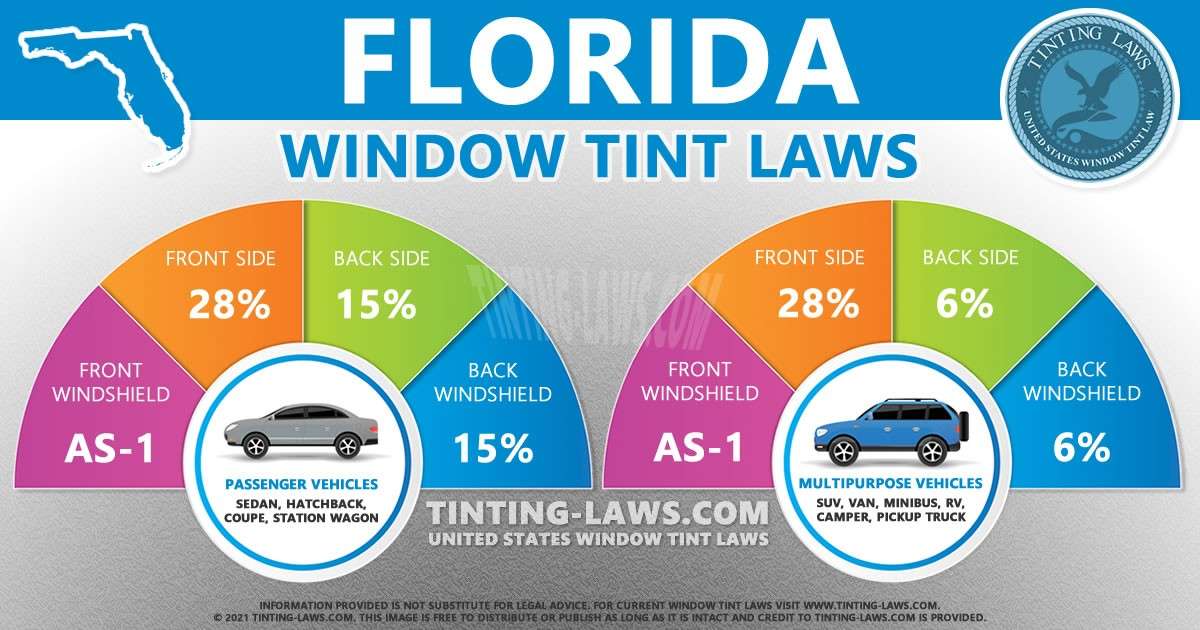
Find car window tint laws by state so you can know which automotive window tint percentage is legal in your state. 2022-2023 Window Tint Laws by State Chart.. Ohio: 50%: any: any: no more than 70%: no more reflective than a standard window: none: Oklahoma: 25%: 25%: 25%: 5 inches or as-1 line, whichever comes first:
What's The Legal Limit On Window Tint In Texas Gallery Guide
2024 OhioTint Laws - Legal Tint Limit For Passenger Vehicles. Front Windshield: Non-reflective tint is allowed on the top 5 inches of the windshield. Front seat side windows: up to 50% tint darkness allowed. Front side windows must allow at least 50% light transmission, restricting tint to 50% or lighter.
Window Tint Rays Auto Salon
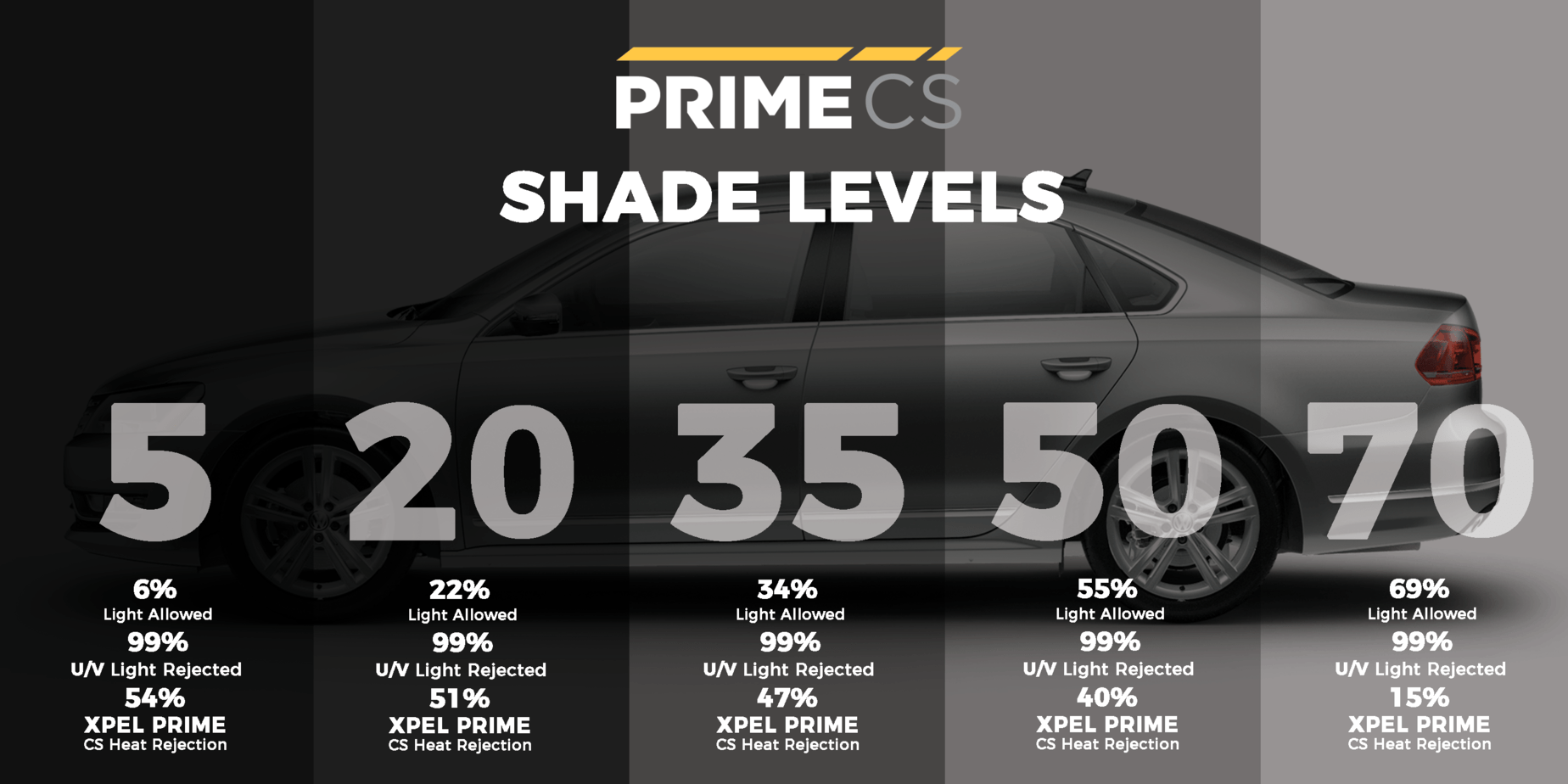
The window tint laws in Ohio are not as stringent as many other states. The darkest legal Ohio window tint law is 50 percent VLT for the front side windows. Many other states have tint laws that prohibit windows that do not meet 50 percent VLT, mainly for the windshield and the side windows.
Window Tint Law in Illinois What Is The Legal Tint in Illinois?
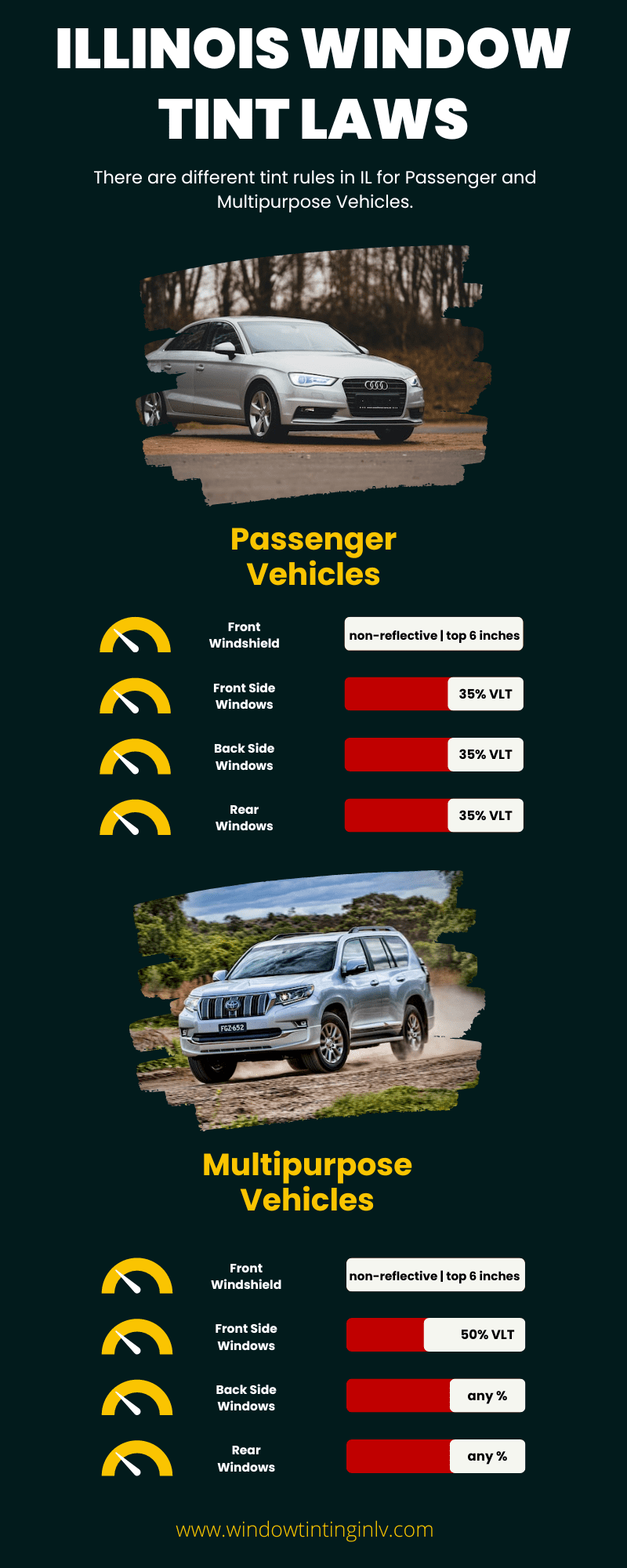
Our article about Ohio tint laws is up to date as of 2024. Last change was made on October 10th, 2023 (approximately 5 months ago). You can rest assured our legal experts are immediately notified of changes, and will always update this article with latest legislation when required.
50 States' Legal Tint Percentages Ultimate Guide 2024
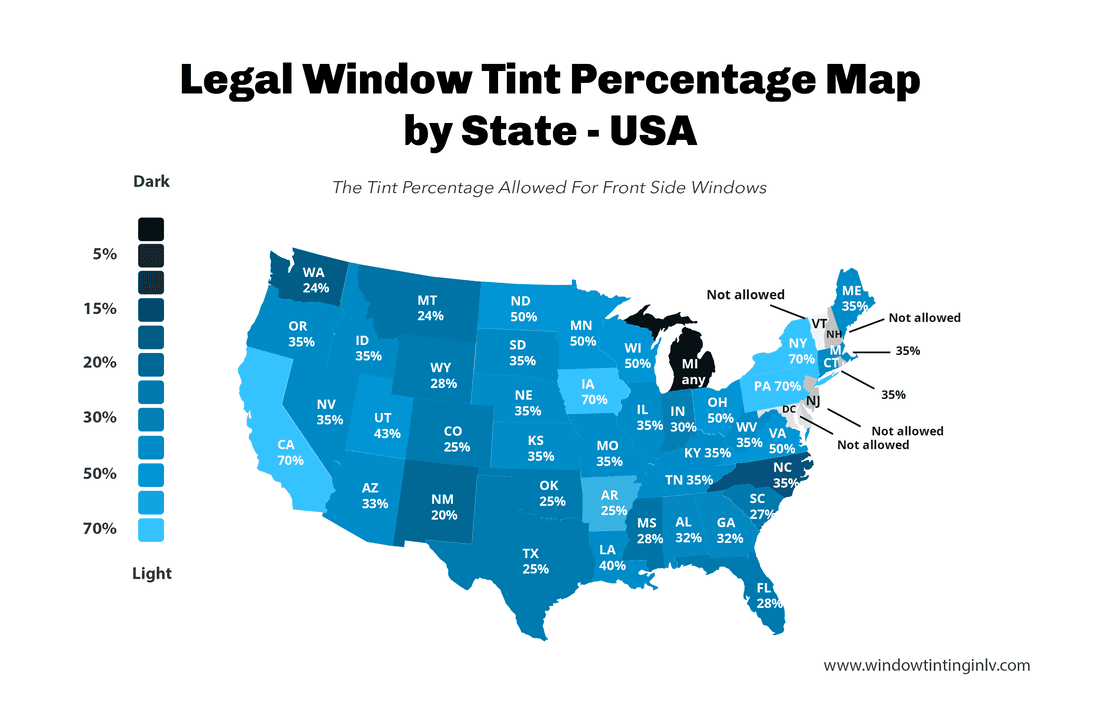
The legal limit for window tint varies depending on where you live and your vehicle type. This limit is generally expressed as a percentage of visible light transmission (VLT), which refers to the amount of light allowed to pass through the window tint film.. A violation of the window tint laws outlined in the Ohio injury laws is a class C.
What Is the Legal Window Tint Percentage in My State?

Tint Laws for Passenger Car and Station Wagons in Ohio. Windshield: Non-reflective tint is allowed on the top 5 inches of the windshield. Front Side Windows: Tint darkness must allow more than 50% of light to pass through. Back Side Windows: The darkness of your window tint has to allow more than 50% of light to pass through.
Ohio Tint Laws 2023 New Tint Laws in OH

Windshield: Non-reflective tint is allowed on the top 5 inches of the windshield. Front Side windows: Must allow more than 50% of light in. Back Side windows: Any darkness can be used. Rear Window: Any darkness can be used. Window tint can reflect incoming light and reduce glare and heat. Ohio window tint law permits a certain window reflection.
What Is the Legal Limit for Window Tint in Ohio?

Here are the latest Ohio tint laws for Sedans, SUVs, and Vans: Front windshield: Allow 70% of the light to pass through. Front-seat side windows: Allow 50% of the light to pass through, plus or minus 3 percent. Back-seat side windows: Any amount of darkness is fine. Rear window: Any amount of darkness is fine.
Ohio Tint Laws 2023 Explained What's The Legal Limit? Rayno Window Film

Here are the laws you must abide by in the state of California: Use a tint that is green, gray, or neutral smoke in color. Have a luminous transmittance of at least 70%. The legal VLT % in California is 70% VLT. Must not increase reflectivity for front and back windows.
Oklahoma Tint Laws • Windows Film Pros Find Laws For All Windows

Section 4513.241. |. Using tinted glass and other vision obscuring materials. (A) The director of public safety, in accordance with Chapter 119. of the Revised Code, shall adopt rules governing the use of tinted glass, and the use of transparent, nontransparent, translucent, and reflectorized materials in or on motor vehicle windshields, side.
Ohio Tint Laws 2024 Updated Legal Tint Limit Window Tint Laws
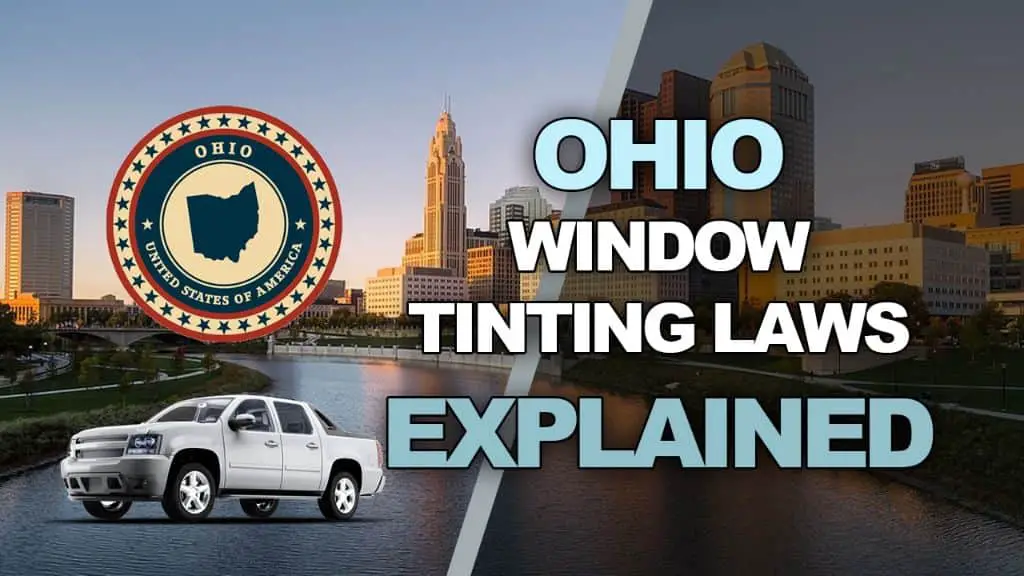
Ohio Window Tinting Laws. Car window tinting laws in Ohio were enacted in 2004. We have provided all the necessary information about your car's window tint, including how dark or reflective the tint is allowed in your state. There are also additional car window tinting rules and regulations in Ohio so make sure you read all about it below.
Ohio Tint Laws 2023 Explained What's The Legal Limit? Rayno Window Film

Below is the chart showing window tint laws for all the 51 states of USA: 1st conviction - $100/10 days, 2nd conviction - $200/30 days, 3rd+ offense within a year - $500/3 months in prison. Class B misdemeanor up to $1,000 fine and/or up to 90 days in jail. 1st warning for wrong coloring, 2nd violation - $25 fine, 3rd violation - $197.
Ohio 2024 Window Tint Laws Car Tint Law
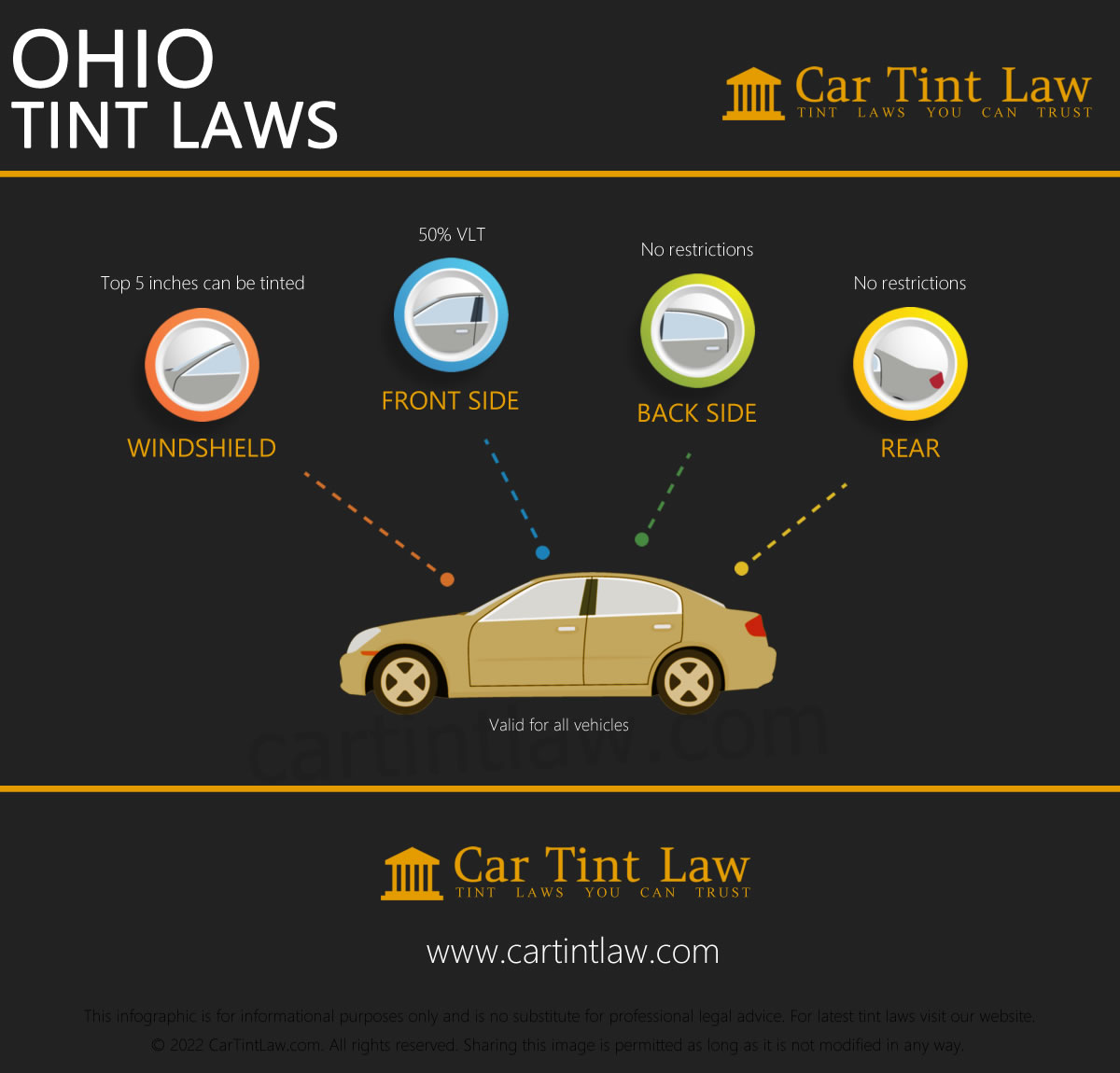
Tint Darkness for Sedans: Windshield: Non-reflective tint is allowed on the top 5 inches of the windshield. Front Side Windows: Must allow more than 50% of light in. Back Side Windows: Any level of darkness is permitted. Rear Window: Any level of darkness is permitted.
Ohio Tint Laws Low Offset
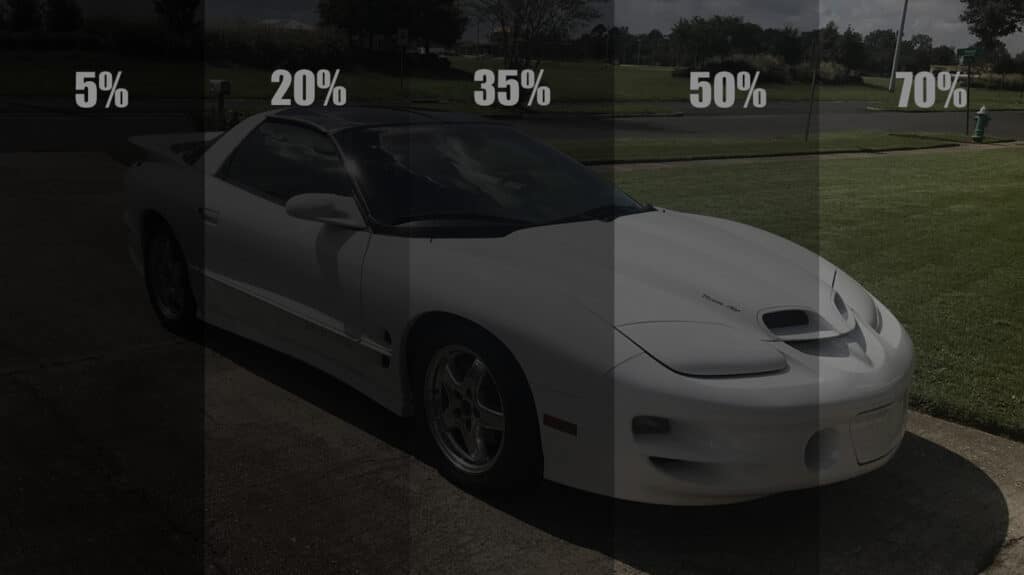
Tint darkness laws for multi-purpose vehicles (SUVs and vans) in Ohio: Windshield: You can use non-reflective tint on the top 5 inches of the windshield. Front Side windows: You can use up to 50% tint darkness. Back Side windows: You can use any tint darkness for backside windows. Rear Window: You can use any tint darkness for rear windows.
Legal Tint in the United States The Laws, Regulations, and Restrictions Dandy Law
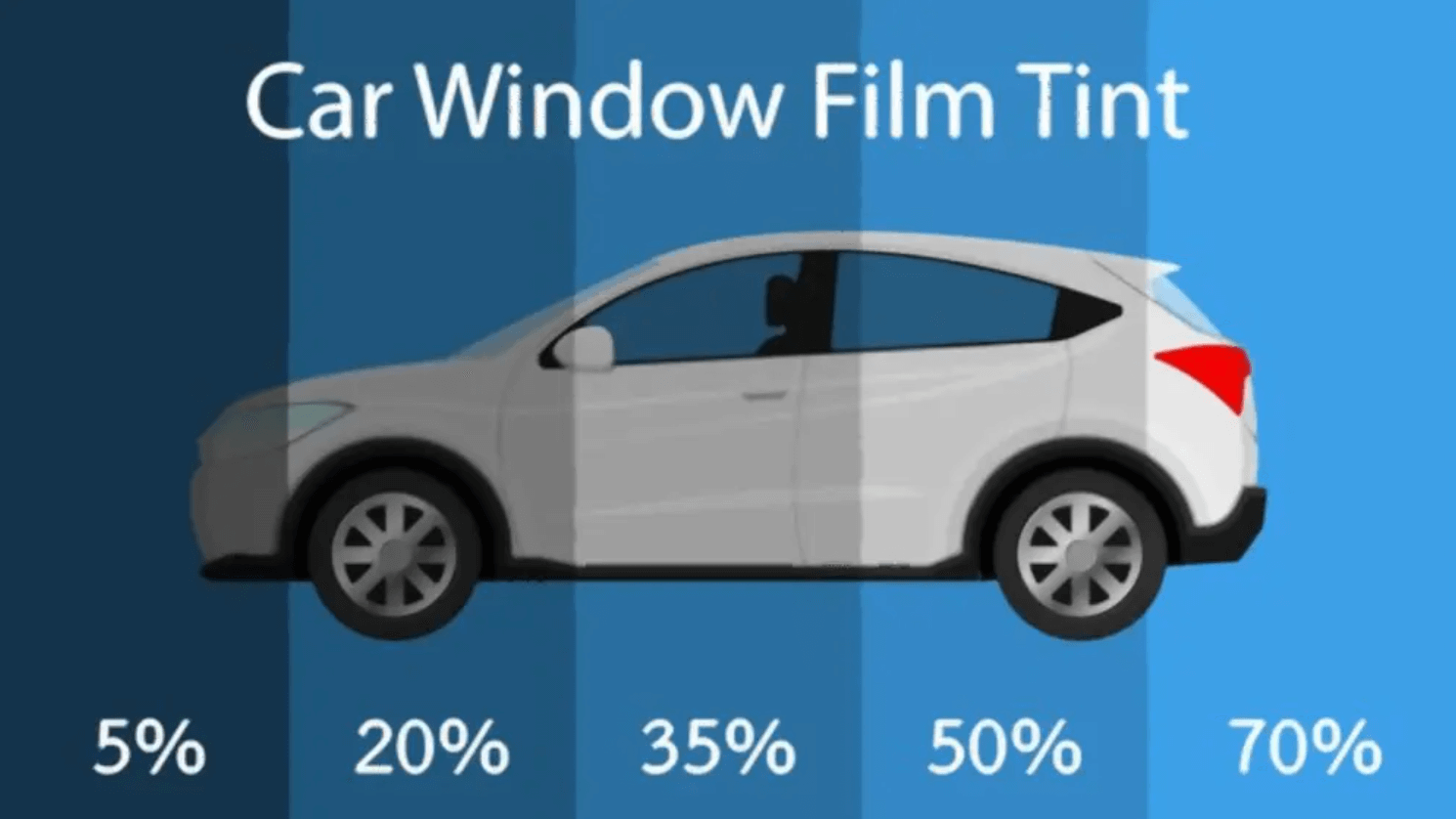
The regulations for tint darkness in Ohio differ based on the type of vehicle. For sedans: Windshield: Non-reflective tint is permitted on the top 5 inches of the windshield. Front Side windows: These windows must allow more than 50% of light to pass through. Back Side windows: You are allowed to use any level of tint darkness on these windows. Rear Window: Similar to the back side windows.
Tint Laws by State Rijal's Blog

The state of Ohio window tint laws came into effect in 2004, so window tint regulations in Ohio are still applicable to most modern window film products, but keep in mind that window film rules in Ohio do change from time to time.